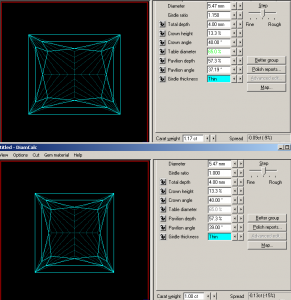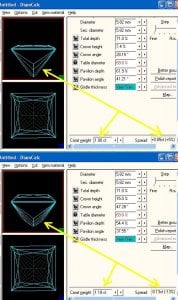whatmeworry
Brilliant_Rock
- Joined
- May 23, 2006
- Messages
- 1,095
Garry,
I don''t have an answer. It''s a hard task if not impossible. My understanding is that pricing of cuts to some extent depends on the yield from the rough, time spent cutting, exclusivity, branding, popularity. The first 2 factors you can take into account.
That does look like a deep pavilion but is it a weight saving measure or something that''s fundamental to its look?
I don''t know what they will ask for one of those but I bet it will be more than the price of a branded hearts and arrow.
I don''t have an answer. It''s a hard task if not impossible. My understanding is that pricing of cuts to some extent depends on the yield from the rough, time spent cutting, exclusivity, branding, popularity. The first 2 factors you can take into account.
That does look like a deep pavilion but is it a weight saving measure or something that''s fundamental to its look?
I don''t know what they will ask for one of those but I bet it will be more than the price of a branded hearts and arrow.






300x240.png)